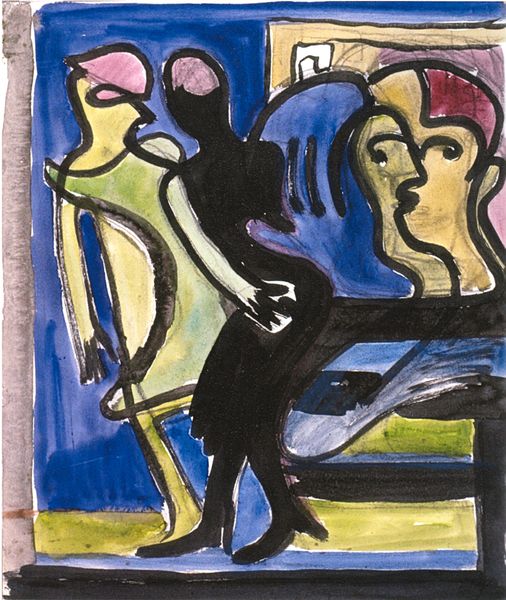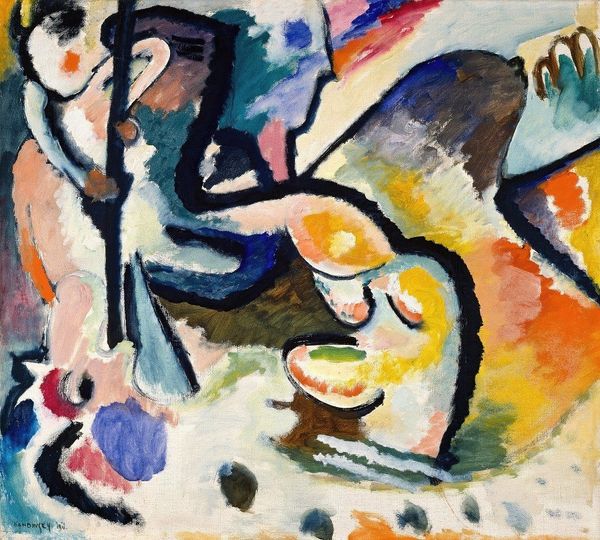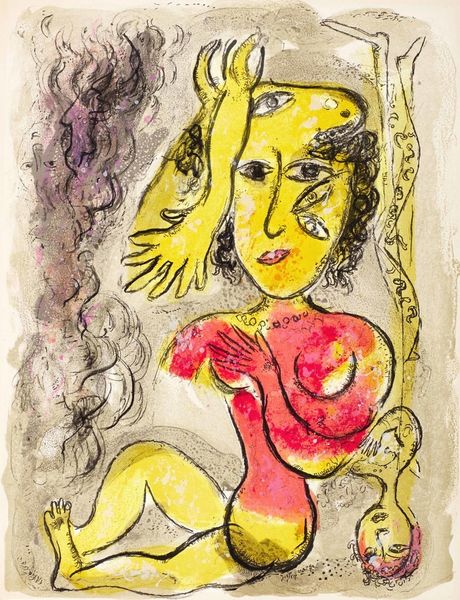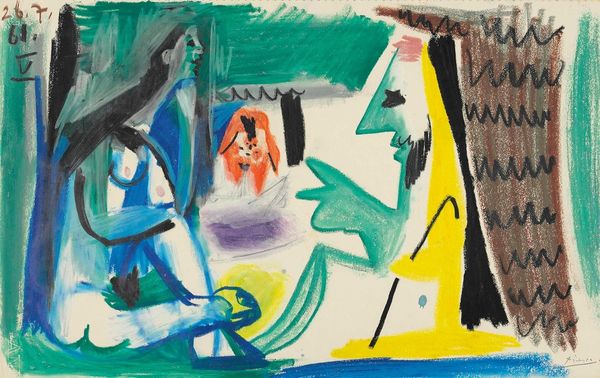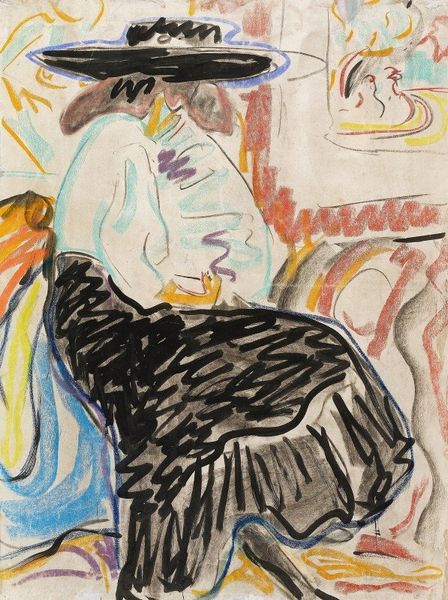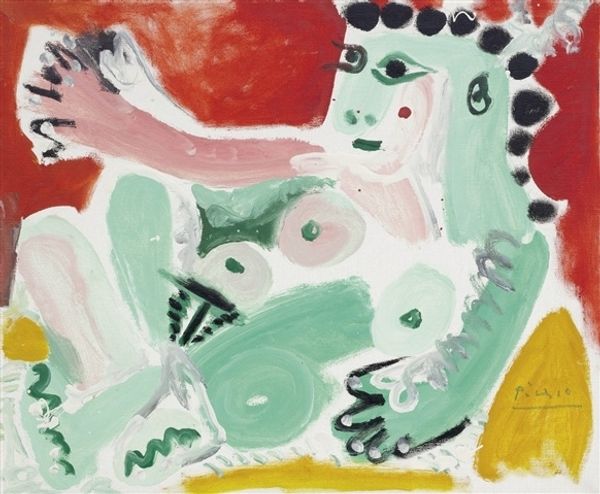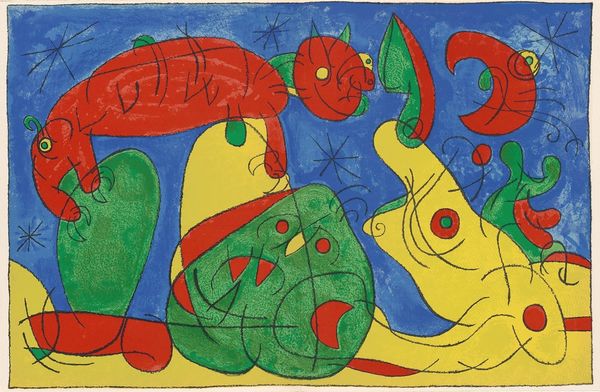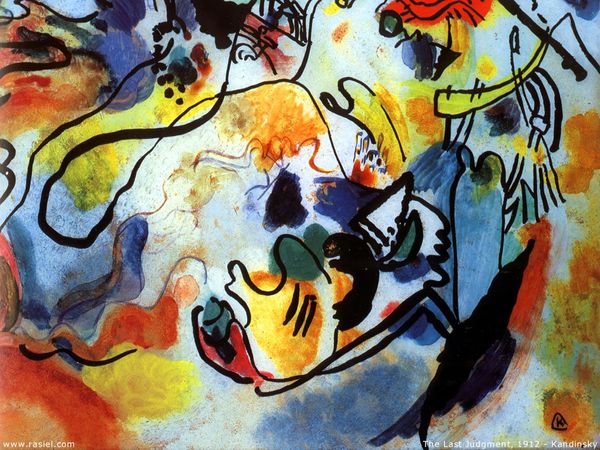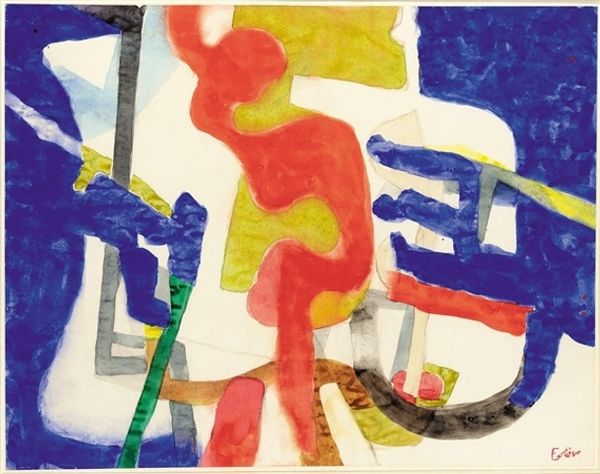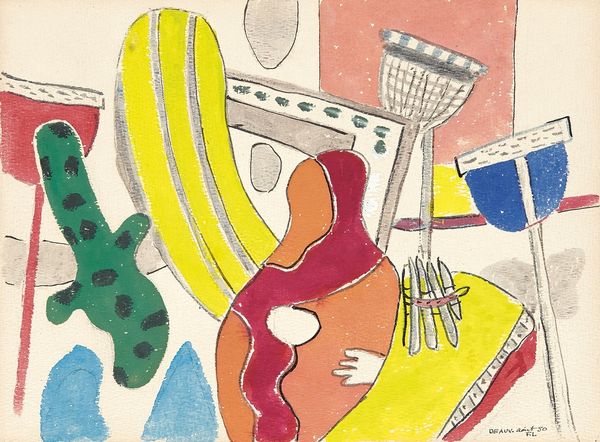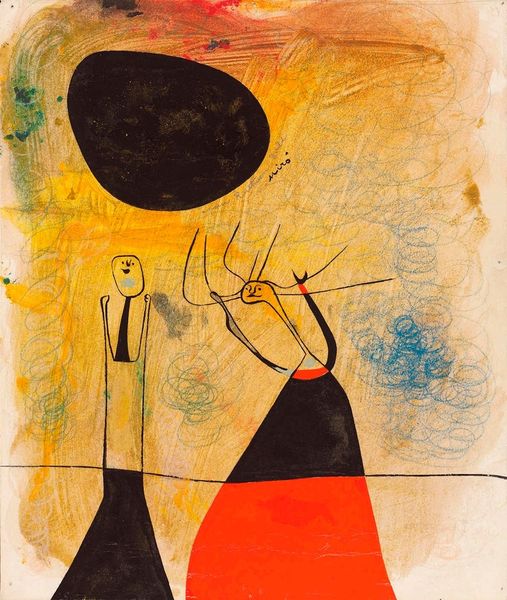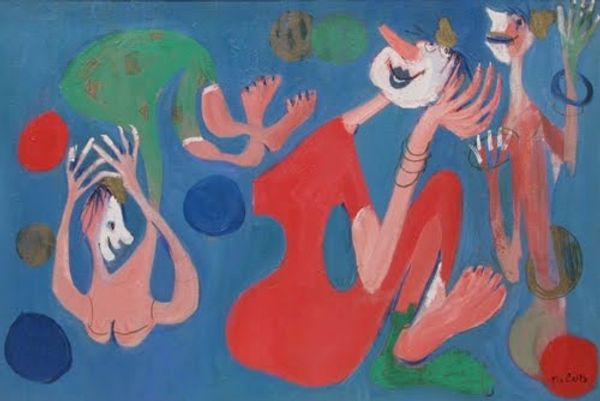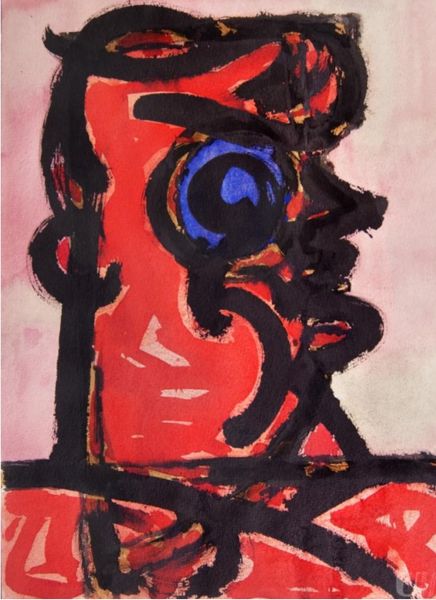
Copyright: Modern Artists: Artvee
Curator: This piece, completed by Picasso in 1970, is titled *Nu au filet et arlequin,* or *Nude with Net and Harlequin.* He employed pastel to create this compelling drawing. Editor: My immediate impression is one of tension—a strained and awkward energy rendered with this chalky vibrancy of color. The Harlequin seems stiff, almost trapped next to the reclining nude. Curator: The Harlequin, a recurring figure throughout Picasso's oeuvre, has origins in the commedia dell'arte. Traditionally, Harlequins are clever servants, but I find this interpretation rather somber. His blue face is almost mask-like, devoid of the playfulness we often associate with the character. He looks as trapped in his role, or perhaps even by the voyeuristic male gaze that has dominated art history, as the female nude trapped within that very graphic net. Editor: I see the pastel medium contributing heavily to that somber quality. It’s almost hasty in its application, especially noticeable in the smudging of the background, the crude and thick applications over a likely coarse laid ground. It has a feeling of immediacy. This isn't the careful building of color one associates with oil; it feels…visceral, like he’s wrestling something onto the page. Perhaps the image and emotion? Curator: Precisely. The visual language of Expressionism, the raw emotive power—Picasso is laying bare his subconscious anxieties in his later years. The figure bound by a net…it's as though the freedom usually expressed in the modernist nude is completely subverted here. Picasso, throughout his lifetime, had consistently rendered women this way, as if possessing the male’s anxieties, doubts, or projections upon the subject. Editor: The almost carelessly applied pastel creates an intimacy, revealing process and a human touch. It’s the friction of the stick against paper. Think, for example, of how this late work also departs significantly from many earlier paintings. The material is no longer concealed; rather, it comes directly to the fore, laying bare the making of this potent and complex work. This material vulnerability gives us an alternative and arguably important point of access to its meanings. Curator: A reminder, perhaps, that even in the hands of a master like Picasso, art-making remains an intensely human endeavor. Editor: Yes, marked indelibly by materials, labor, and the conditions in which that labor takes place, revealing much in the traces left on its surface.
Comments
No comments
Be the first to comment and join the conversation on the ultimate creative platform.
